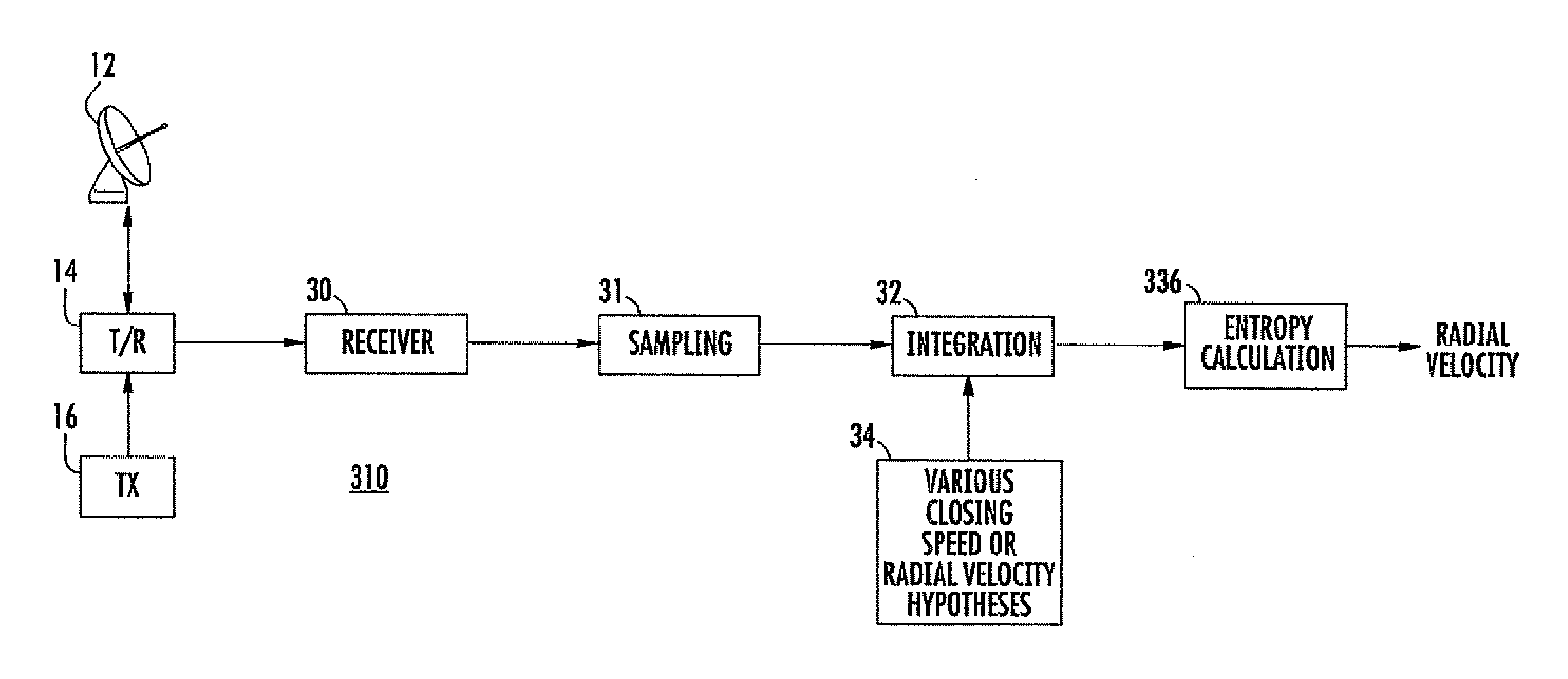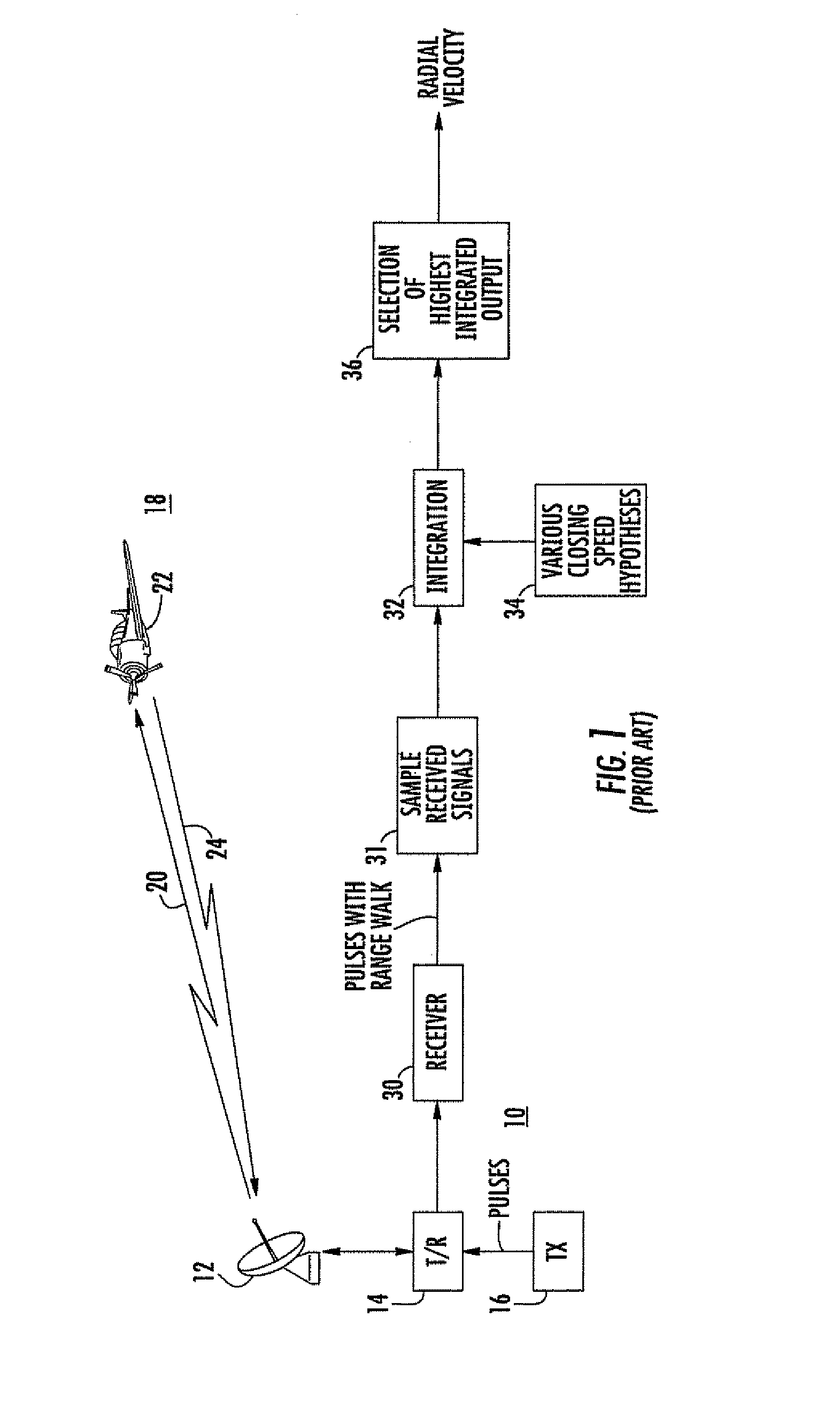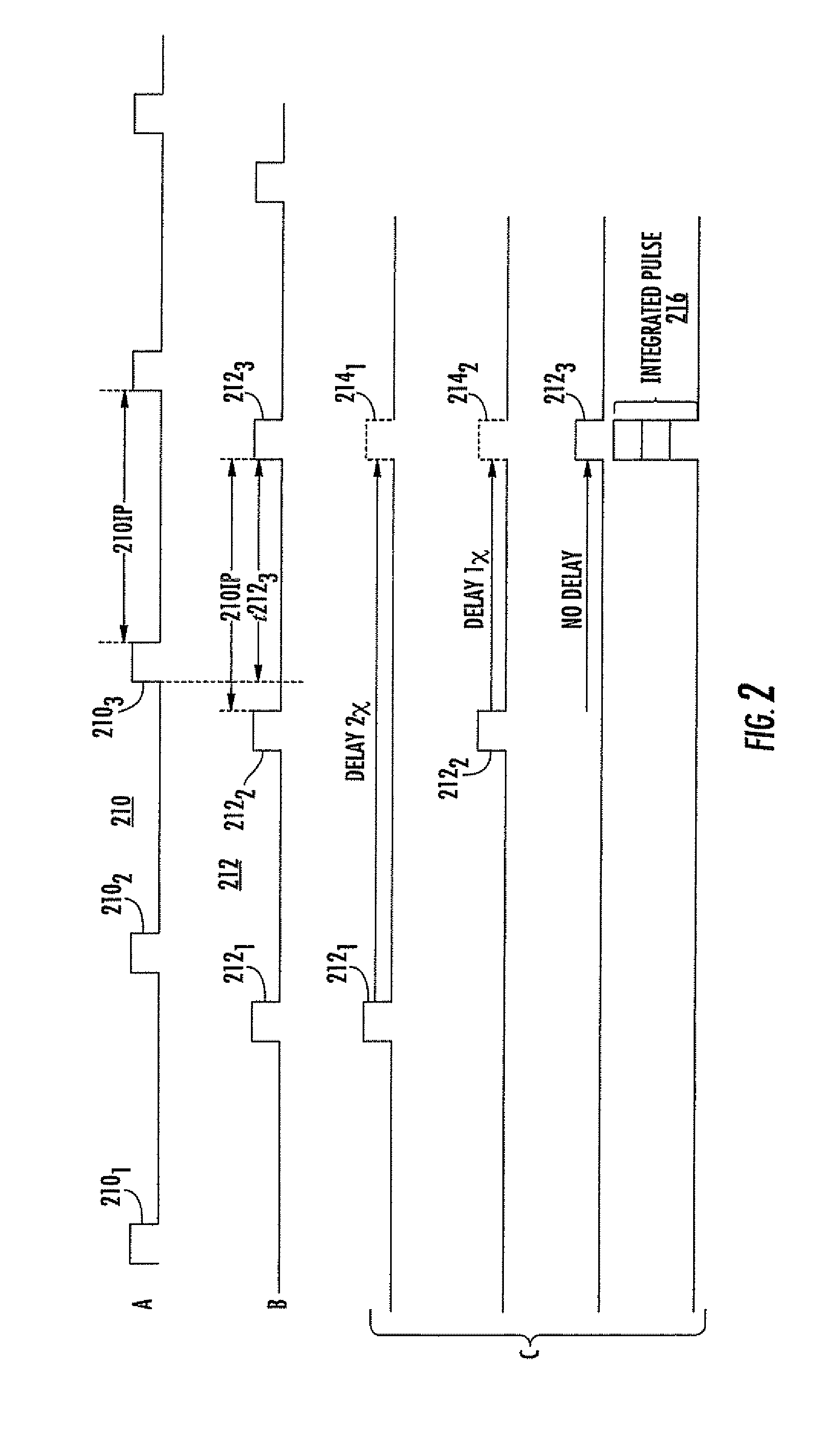Entropy method for range alignment for integration of target returns
a target return and entropy technology, applied in the field of range alignment of target return pulses, can solve the problems of inability to detect targets, inability to integrate to increase and inability to achieve the effect of increasing the target signal amplitud
- Summary
- Abstract
- Description
- Claims
- Application Information
AI Technical Summary
Problems solved by technology
Method used
Image
Examples
case 1
[0028]
[0029]Pi=1,i=i0=0,otherwise(4)
That is, only one value of the random variable can be realized and it always occurs. If case 1, equation (4) is put into equation (3), the result is
S=0 (5)
This indicates “perfect orderliness”, or no “spread” of values.
case 2
[0030]
pi=1 / N, all i (6)
That is all values of the random variable are equally probable. In this case, equation (3) will show that
S=log N (7)
Thus, large N means greater disorder or “spread”. Equations (5) and (7) are the extremes for the entropy of a distribution.
[0031]Entropy as a measure of disorder or “spread” can be applied to any arbitrary set of numbers, real or complex. In fact, the concept can be applied to any set of quantities or properties that can be counted. They need not be values of a random variable. The only requirement is that means be available for counting the number having a given value or a given property. Then the “count” for each value or property can be made, by normalization, to have the properties of a probability. This can be shown by denoting the value or property of some quantity by Ai, where i denotes or indexes the property. Then let ni denote the number having this property. The relative or normalized number having this property is
[0032]relativenum...
PUM
 Login to View More
Login to View More Abstract
Description
Claims
Application Information
 Login to View More
Login to View More - R&D
- Intellectual Property
- Life Sciences
- Materials
- Tech Scout
- Unparalleled Data Quality
- Higher Quality Content
- 60% Fewer Hallucinations
Browse by: Latest US Patents, China's latest patents, Technical Efficacy Thesaurus, Application Domain, Technology Topic, Popular Technical Reports.
© 2025 PatSnap. All rights reserved.Legal|Privacy policy|Modern Slavery Act Transparency Statement|Sitemap|About US| Contact US: help@patsnap.com



